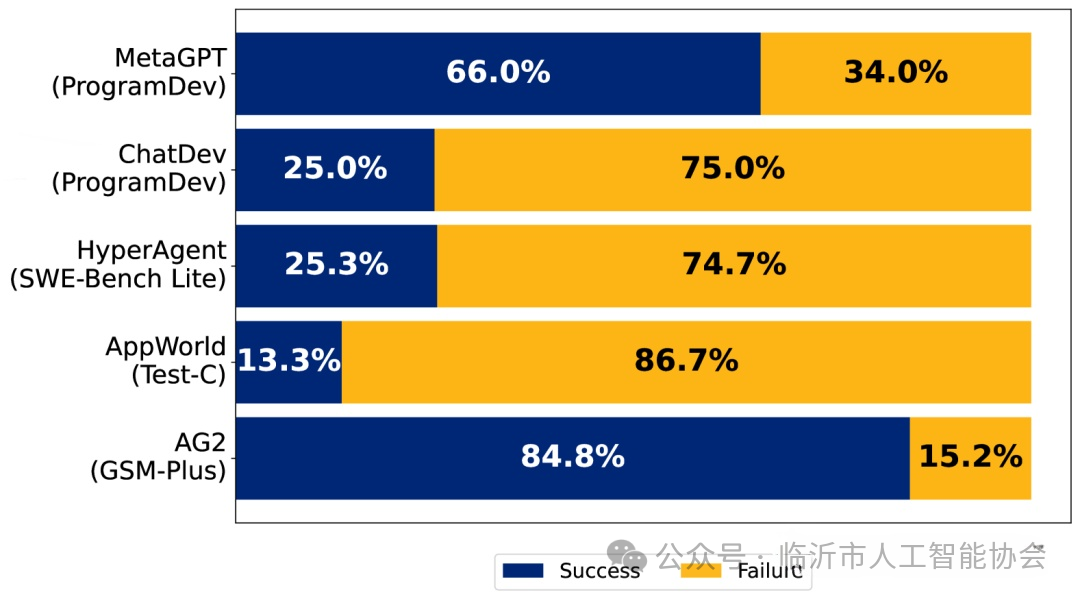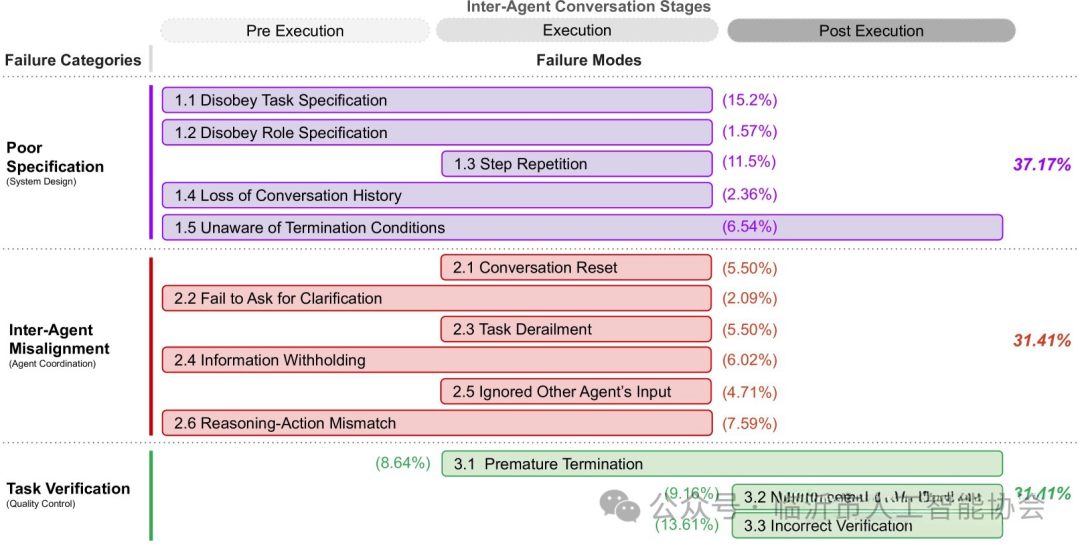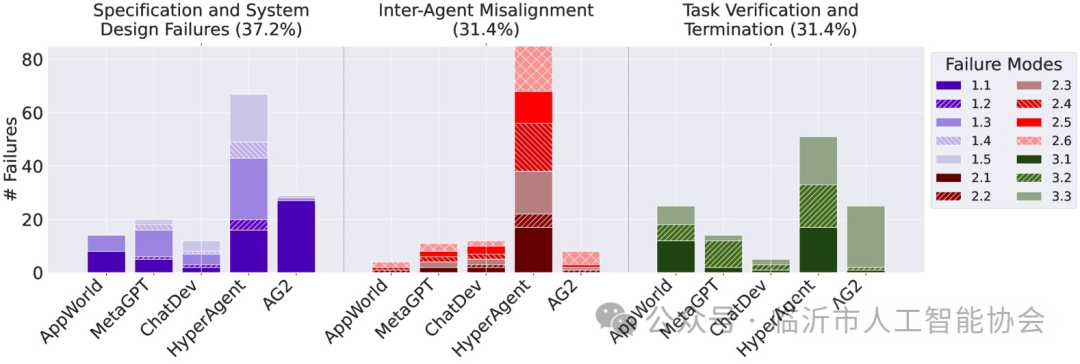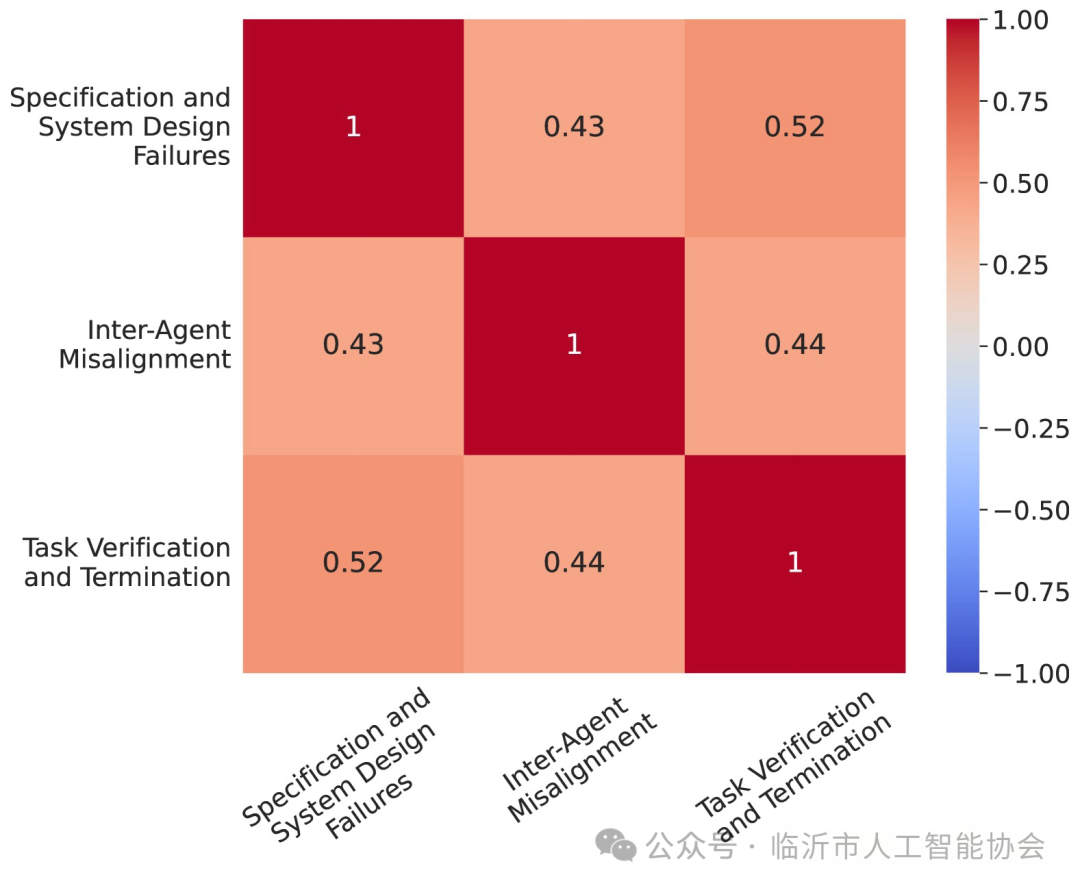🔥 [Heartbreaking Data at the Beginning]Research shows that even top open-source multi-agent systems like ChatDev have a task accuracy rate of only 25%! Why does the theoretical “collaborative intelligence” frequently fail? We reveal the truth behind the failures using over 150 dialogue trajectories and expert annotations!
The Gap Between the “Ideal and Reality” of Multi-Agent Systems
In recent years, multi-agent LLM systems have emerged in fields such as software development and drug research due to their advantages in multi-role collaboration and dynamic environment interaction. However, reality has dampened these ideals:✅ The AG2 system has a mathematical problem-solving accuracy of only 84.75%✅ The success rate of ChatDev in software development is as low as 25%What exactly is the problem? We conduct an in-depth “dissection” of five major mainstream systems including AG2 and ChatDev!

The flowchart above helps us understand the overall framework and methodology of the research. From the diagram below, we can see that these systems in the study have significant differences in failure rates, indicating substantial differences in design and implementation.

The failure rates of five popular Multi-Agent frameworks using GPT-4o and Claude-3 as the base models.
Failure Causes: A “Three-Level Diagnostic Report”
Through the analysis of over 150 dialogue trajectories and expert annotations (Cohen’s Kappa=0.88), we identified 14 fatal failure modes, categorized into three major types based on the stage of occurrence:
🛑 Type 1: System Design Flaws (35%)
-
“Rule-Breaker” Syndrome
-
FM-1.1 Violation: The chess system arbitrarily switched to coordinate notation
-
FM-1.2 Role Overreach: The CPO in ChatDev usurped the CEO’s decision-making power
“Amnesia” Spread
-
Loss of dialogue history, repeated steps, not knowing when to stop…
🛑 Type 2: Collaboration Collapse (45%)
-
“Ineffective Communication” Four Sins
-
FM-2.1 Sudden restart of dialogue
-
FM-2.4 Concealing key information
-
FM-2.6 Saying one thing and doing another
“Collective Drift” Crisis with a task deviation rate as high as 32%, akin to a team that constantly goes off-topic in meetings
🛑 Type 3: Acceptance Control Failure (20%)
-
“Hasty Completion” Trap
-
Premature termination led to a 28% increase in error rate
“False Acceptance” Risk 63% of errors were not detected during the verification phase

Real Case Studies: “Revival Plans”
Case 1: AG2 Mathematical System’s “Comeback Path”
-
Original Sin: 84.75% accuracy
-
Transformation Plan:✅ Added a “Validator” role dedicated to checks✅ Mandatory “Problem-Solving + Verification” dual process
-
Results: Accuracy soared to 89.75%!

Case 2: ChatDev Software Company “Organizational Reform”
-
Pain Point: 25% success rate
-
Key to Breakthrough:✅ Architecture changed from DAG to cyclic graph✅ Set “CTO Final Review” + iteration limit
-
Achievements: ProgramDev task success rate doubled to 40.6%

System Optimization: “Dual-Track Strategy”
🔧 Tactical-Level Transformation
-
Refinement of role prompts (e.g., clarifying CEO/CTO authority boundaries)
-
Building a “Problem Solver – Encoder – Validator” golden triangle
🏗️ Architectural-Level Revolution
-
Developing independent verification agents (dedicated to “finding faults”)
-
Introducing graph attention communication protocols (dynamically adjusting collaboration weights)
-
Building a “Memory Bank” to prevent dialogue loss
[Future Battlefield]
The failure rate difference chart shows (see below) that different systems perform significantly differently in the three major failure stages. To break through the bottleneck, it is essential to:1️⃣ Quantify agent uncertainty2️⃣ Establish standardized communication protocols3️⃣ Develop dynamic verification mechanisms
The evolution of multi-agent systems is essentially the construction of AI sociology! Click to follow for cutting-edge research progress on AI collaborative systems!
 Feel free to leave comments for discussion!
Feel free to leave comments for discussion!